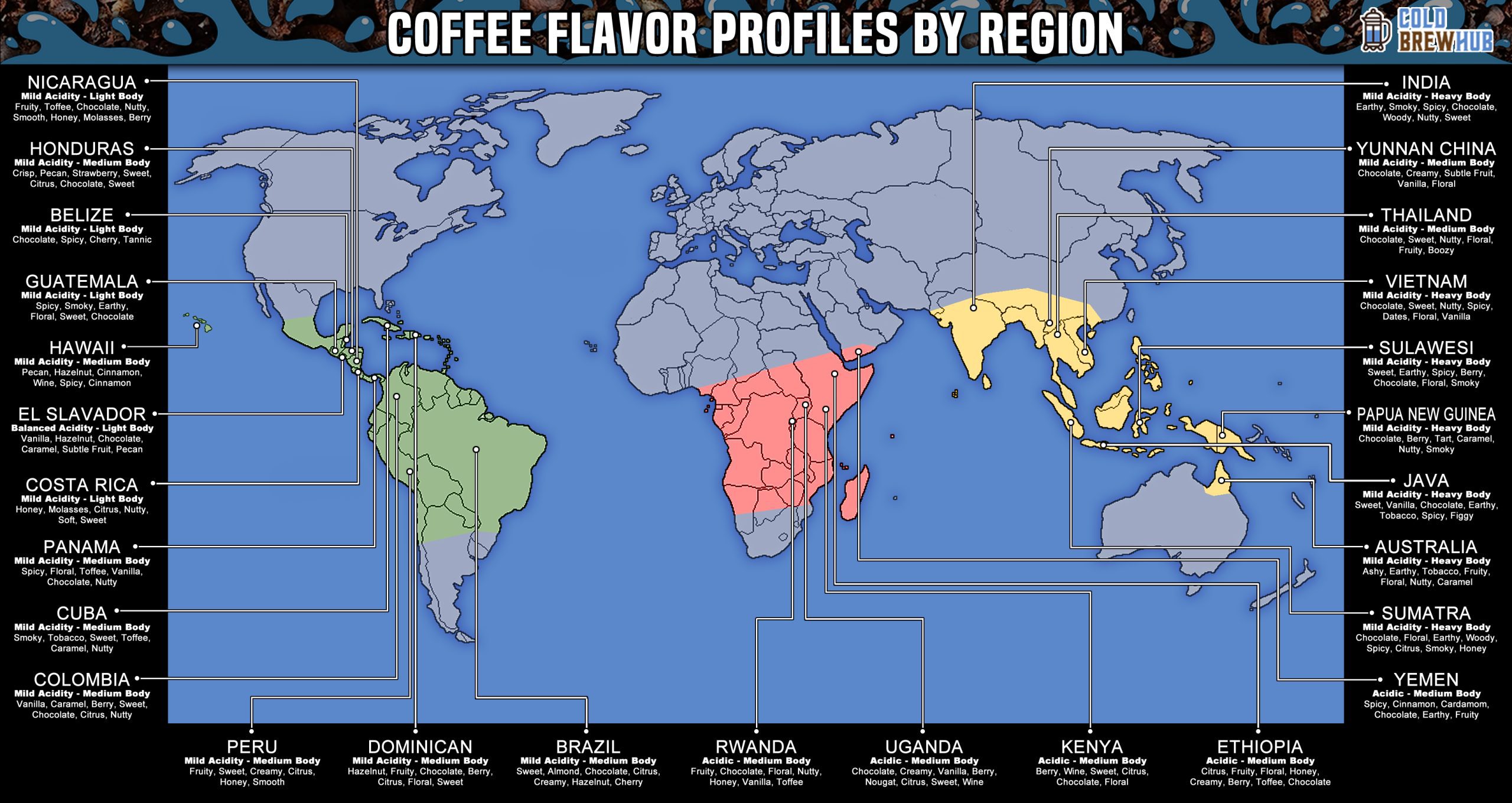Key Takeaways to Fix Sour Coffee
Choose an origin or blend for your beans that is less acidic in nature.
Ask your local coffee roaster for a medium to dark roast.
Adjust your coffee grounds grind size to be ideal for the brew method.
Ensure Coffee Bean freshness to avoid stale, unwanted flavors.
Use PH-balanced filtered water at the proper ratios for cold brewing.
Go for Immersion or Hybrid Cold Brewing methods over cool drip.
Cold brew coffee is one of the most enjoyed beverages in the world, because it tastes great and keeps you feeling energized. However, there is one issue that may creep up and turn your mood sour--sour tasting coffee.
Now, if you have created a cold brew lemonade, this is one of the reasons cold brew coffee has sour flavors. My expectation is that your sour coffee woes are not due to a bad coffee recipe.
Did You Know? The human tongue has upwards of 8000 taste buds on average. That's a lot of taste buds and a lot of opportunity to develop variance in flavor preference.
In this article, we'll go over what makes coffee sour, and offer some ways to fix sour coffee once and for all. So if you are tired of sour cold brew coffee, and are looking for solutions to fix it, keep reading to learn more.
Coffee Taste is Subjective
The fact is, some people don't mind a sour brew, just like there is a host of hot coffee lovers who like bitter coffee. Still, the reason most of us turn to cold brewing is because we are looking for a smooth alternative to traditional hot brew.
We know that a proper cold brewing process makes coffee taste sweeter. That's the appeal!
Why does my cold brew coffee taste sour? Let's dive in...
YOONGI TAKES HIS COFFEE SUGAR FREE YET HE HATES SOUR COFFEE, WHAT’S THE TRUTH, WHAT’S THE LIE, WHAT’S HAPPENING pic.twitter.com/k2EBPUbkiA
— mere⁷misses BTS (@MINSHlNY) February 5, 2019
What is Behind Sour Coffee?
The most common reason you are tasting sour coffee is that it isn't reaching a complete extraction or it is under-extracted. This is why your cold brew coffee may have a slightly sour taste.
Fortunately, with some minor tweaks to your brewing method, you can say goodbye to sour tasting cold coffee, and hello to the rich flavors you are expecting with each sip.
Sour or Bitter Coffee
If you over-extract your coffee beans, you may notice your coffee having a bitter taste, and sour if you tip the scales in the other direction. Obviously, the trick is to find the right balance for your palate.
Acidity Can Be Responsible for Sourness and Bitterness
Coffee, no matter how it's extracted contains some acidity. Acidity is what turns a dull, flavorless brew into crisp, bright, and vibrant tasting coffee. It is also responsible for coffee tasting too bitter.
Without acidity, coffee would be flat and boring. We wouldn't line up every morning to purchase it if that were the case. So acidity is here to stay.
That said, there are 4 main acids found within coffee beans:
- Ascetic acids - adds a vinegar bite similar to a sour beer
- Phosphoric acids - adds tangy and sweet notes
- Citric acids - adds fruity citrus flavor compounds
- Malic acids - adds tart apple flavors
There can be too much of a good thing, and that's where our exploration begins.
Acidity is not the Only Reason Your Coffee Tastes Sour
The key to understanding control over your brew is to understand how several factors affect extraction. Ask yourself the following questions to see what I mean.
- What is the origin of your beans?
- Are they fresh beans, green beans?
- What is the roast?
- What is the grind size of your coffee grounds?
- Are you making a hot coffee, iced coffee, or cold brew concentrate?
- Are you brewing in a French press or something more akin to a pour over coffee?
- What is your brew time?
- What is your coffee to water ratio?
- Are you blooming your grounds with hot water first?
There is so much to consider that it almost makes you want to go to to the grocery store to buy the pre-bottled stuff! But don't worry, we've broken this down simply into a flow you can follow to ensure you never have to buy grocery store coffee again.
So let's turn that sour face into a power face and fix your sour brews once and for all.
Why Does My Cold Brew Taste Sour?
It depends. Since cold brew coffee results in providing more nuance than hot brewing it, we need to tackle the sour taste by troubleshooting from the beginning. So let's do it!
Step 1: Check the Coffee Beans Origin
Single origin coffees from South America generally contain fewer acids, resulting in earthy, nutty flavors. On the other hand, coffees from Africa are known for their bright, citrusy notes.
These contain much higher amounts of acids within them, so they are naturally more tart to begin with.
Combine an otherwise great-tasting bean origin with bad processing, roasting, or coffee extraction, and you've got a harsh awakening.
One of the best ways to ensure balanced coffee flavors is to create a blend using coffees from your favorite origins together.

Combining the bright citrusy Ethiopian Yirgacheffe with Colombian Supremo might result in a wonderfully balanced chocolate citrus flavor that would impress even the snootiest of specialty coffee professionals.
So, before purchasing your beans, check the origin against a flavor chart, like the one below.

Step 2: Check the Roast
As we've covered in other articles, choosing the best roast for your cold brew is vital to its final flavor. The coffee roasting process is pretty straightforward with a light roast containing more of the fruity and floral notes, while darker roasts pull more of the nutty earthy notes.

The lighter the roast, the brighter the flavor as fewer acids break down. The darker the roast, the more earthy and muted the flavors become.
Coffee roasting is a bit of an art, but there is science which backs up why the flavors change during the roasting process, and why this artform provides an incredible amount of nuance for the bean's eventual flavor.
The Coffee Roasting Process & The Maillard Reaction
It starts with fresh green coffee beans. Through a perfect dance of heat, air, mixing, and time, roasters convert green beans into the various roasts we know and love.
The roasting process brings about a chemical "browning" phenomenon known as the Maillard Reaction. This reaction is responsible for turning bread into toast, making your bacon crispy, caramelizing onions, and of course, roasting coffee beans.
So, if your coffee is under-roasted the Maillard Reaction doesn't have the opportunity to caramelize the sugars within the coffee beans. This makes coffee taste sour even before it's brewed.
If buying online, check that the roast is medium to dark for most cold brew coffee applications. If you plan to make your own roasted beans, ensure you have enough practice with your coffee roaster that you understand the differences in how it roasts fresh beans.
Step 3: Check the Age of Your Beans
Speaking of bean freshness, let's talk about the age of your beans as they play a factor in how coffee will taste.
Over time, coffee breaks down, aromatics dissipate, acids become more aggressive, and sugars ferment.
The longer your coffee beans oxidize, the more stale it will taste. In fact, within just a month of roasting, your once fresh coffee beans begin to break down.
Stale beans make sour coffee.
On the flipside, brewing freshly roasted beans without allowing enough time to settle may result in a similarly sour cold brew coffee. Roasting coffee correctly comes with a bit of patience, and experience required.
Step 4: Check Your Grind Size of the Coffee Grounds
The size of your grind plays a huge part in how well water can extract the flavor compounds from your coffee grounds. The more surface area the water has contact with, the deeper and faster the extraction will be.
While the rapid pressure extraction from an espresso might work best with the finest grinds possible, most cold brew coffee recipes call for a coarser grind. This should make sense as cold brews can take up to 24 hours to complete, depending on the method.

To avoid an under-extraction for your brew method, choose a grind size for your coffee grounds appropriate for your brewing method. Your coffee brewer will provide instructions for producing the best coffee grinds and what settings you should use on your coffee grinder.
Choose a Grind for Your Brew Method
In most cases, you will want a coarser grind for cold brew coffee, unless you are brewing with a cool brew tower.
An extreme example, whole coffee beans used in a cool drip Kyoto style cold brew tower will likely result in a sour drip coffee flavor.
Use finer grind coffee grounds where water has less extraction time or when you are looking to increase the speed of your brews.
Cold brewing immersion style, however, is the most forgiving for an incorrect grind size. You can even brew whole beans from the pack without grinding if you are willing to wait long enough.
Step 5: Check Your Water Quality & Amount
Water quality is one of the most overlooked causes of under or over extraction. To put it simply, water tends to "absorb things" into it.

So the fewer things it in it prior to the brew, the more it should extract. That said, we do not recommend using distilled water or reverse osmosis water for most purposes.
The lack of minerals and compounds may seem like a good starting place, but our bodies need these minerals to live.
That doesn't mean you should use many of the available bottled water options either.
Most bottled water companies have terrible quality assurance standards and ship overly-acidic water to distribution centers for sale at grocery and convenience stores.
I can't imagine adding acidity from your water will help remove the sour flavor.
Still, I wouldn't recommend using water straight from your tap unless you have checked the water quality standards for your city or county for harmful contaminants first.

Instead, I recommend you use PH-balanced filtered water that has been verified through quality assurance testing, or filtering water yourself using a gravity water filter.
Finally, you will want to follow a proper cold brew ratio for the type of batch you want to create. We've got more information on these ratios in another post, but essentially having too much water will result in a weak cup of coffee, while too little water will create a cold brew concentrate.
Step 6: Check Your Brewing Method
For cold brew, there are several coffee brewing methods you can employ based on your preferences. You will want to be mindful of this information, otherwise you might complain that you coffee tastes weak or bitter. Let's quickly go over them now:
Cold Brew Immersion
As we went over before, cold brew immersion brewing process is much more forgiving than some of the others for a host of reasons.
The main reason is that brewing coffee this way takes the longest to complete a successful extraction.
You can have one or more of the aforementioned issues present and still have a decently flavorful cold brew as a result.
To avoid a sour immersion cold brew batch, choose a grind size in proportion to the brew time.
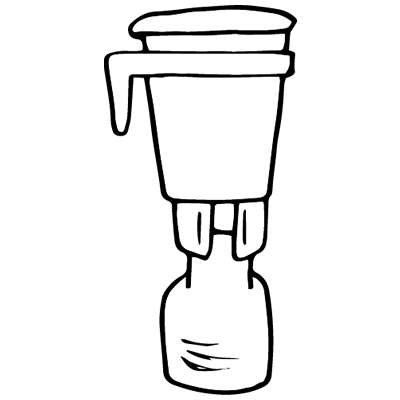
I've brewed whole bean coffee for days, but this is not ideal for finer grinds.
Generally speaking your cold brew steep time should be no longer than 24 hours and no less than 12 hours.
Cool Drip Kyoto / Dutch Cold Brew
Cool drip brews are the most advanced of the cold brew coffee methods and are far less forgiving for mistakes in preparation.
The process slowly drips a water droplets onto ground coffee where the friction from making contact with it extracts the good stuff.
Unfortunately, making a poor judgement in any of the above steps could result in a less than idea cup of coffee.
To avoid a sour drip coffee, choose a medium-fine or pour-over grind setting in your grinder.
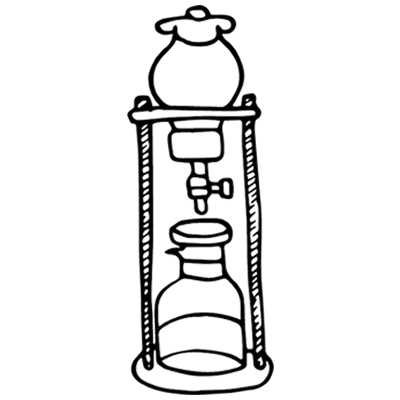
Rapid Agitation / Hybrid Cold Brew
Hybridized cold brew processing methods combine the power of friction from drip methods with the holistic extraction qualities associated with immersion brewing.
These come in a variety of form-factors and include many of the fastest cold brew products on the market today.
It's easy to over-extract when you apply friction to ground coffee, so to ensure your cold brew tastes neither sour nor bitter, it is recommended to follow the manufacturer instructions for the cold brew maker you decide to use.
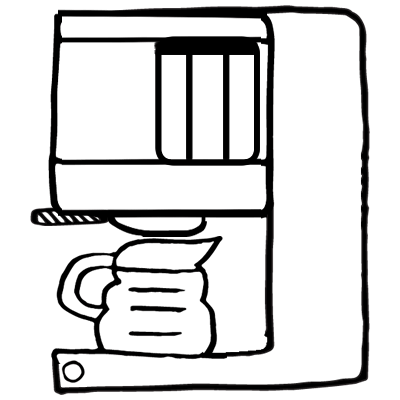
The Sour Nature of Under-Extracted Coffee
Depending on which brew method you choose, you will lengthen or shorten the extraction time. As we covered before, under-extracted coffee is the primary reason your coffee tastes sour and over-extraction leads to a bitter flavor.
But, what does under-extraction mean? In traditional brewing, when your coffee beans have not had time to fully extract, we refer to this as an under extraction. This is why a traditional French press hot coffee takes 5 minutes or more to brew.
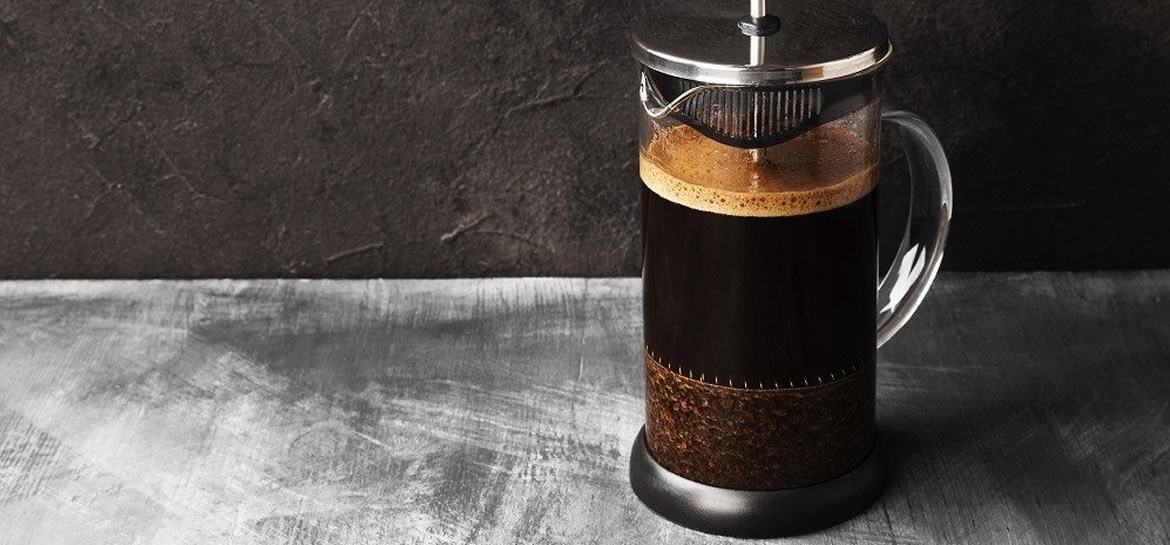
Now, what causes this under-extraction of coffee beans? Let's go over some common reasons that lead to under extraction.
Here are 4 reasons why your coffee may be under-extracted:
You've ground your beans too coarse. Larger grinds take longer to extract than fine ones because it takes longer for the water to reach the center of each particle. A grind size that is excessively coarse may contribute to the time it needs for a balanced extraction and leads to coffee tasting sour.
Your water is too cold. For hot brewed coffee, you should use water at a temperature between 195 to 205 degrees Fahrenheit. For cold brew coffee, you'll have a better experience using lukewarm water over refrigerated or cold water. Iced coffee extraction takes a very long time, and should be saved for cool drip towers versus immersion brewing.
Your water usage was insufficient. Your coffee to water ratio is very important, and you will inadvertently produce under-extracted coffee if you don't give each ground an adequate quantity of water to extract a balanced brew.
Your brew period was insufficient. You'll experience an issue with time more in the beginning of your cold brew coffee brewing journey, given it's hard to be patient. Pay attention to the instructions for the coffee maker you are using and the associated steep times.
FINAL THOUGHTS
There you have it...All the reasons why your cold brew tastes sour. I hope the above information makes brewing coffee much more enjoyable and that the coffee taste you experience is ideal to your liking.
What do you think? Do any of the above situations resonate with you? If so, try the fixes we went over and let us know in the comments how it went.
Did I miss something? Let me know!

 misses BTS (@MINSHlNY)
misses BTS (@MINSHlNY) 